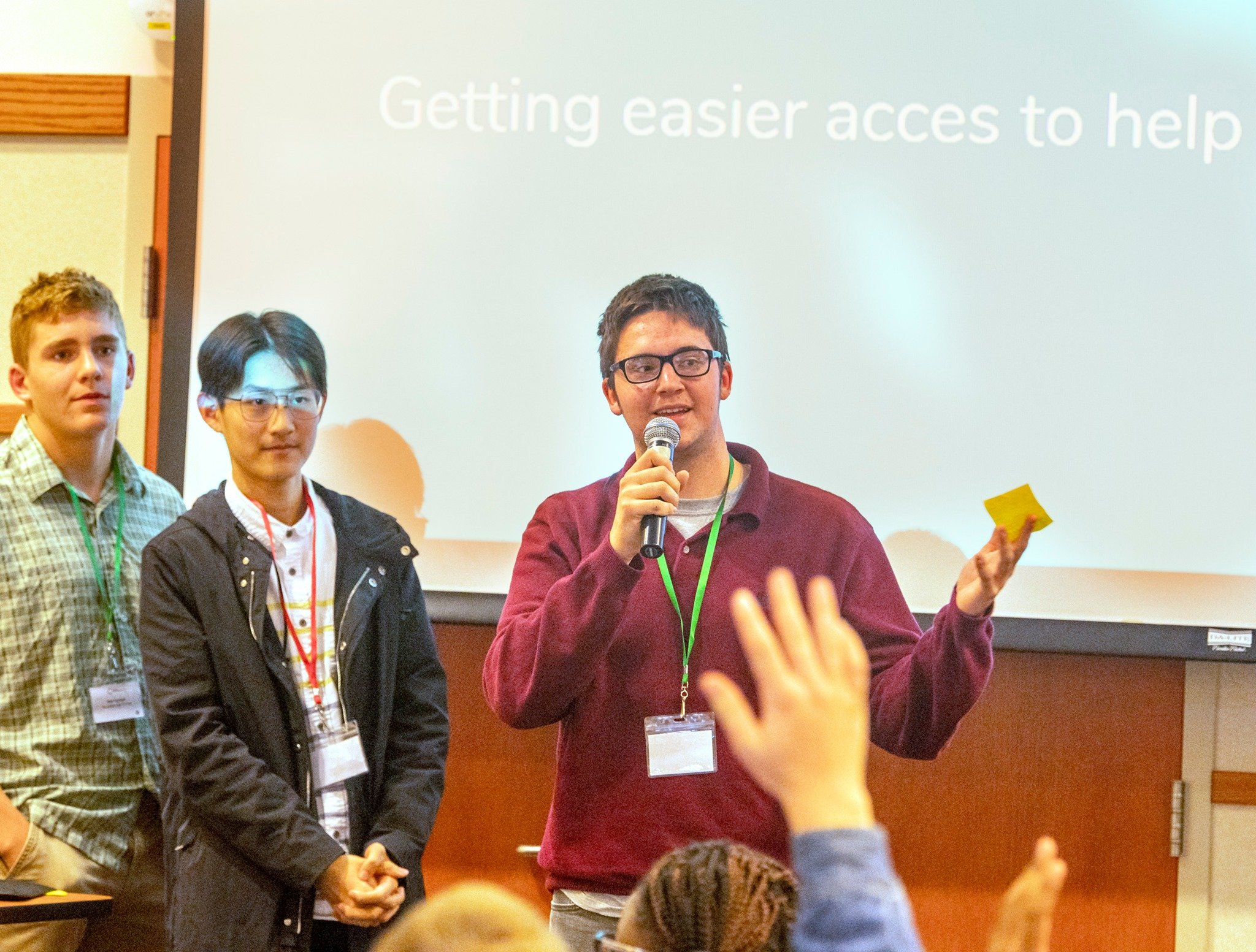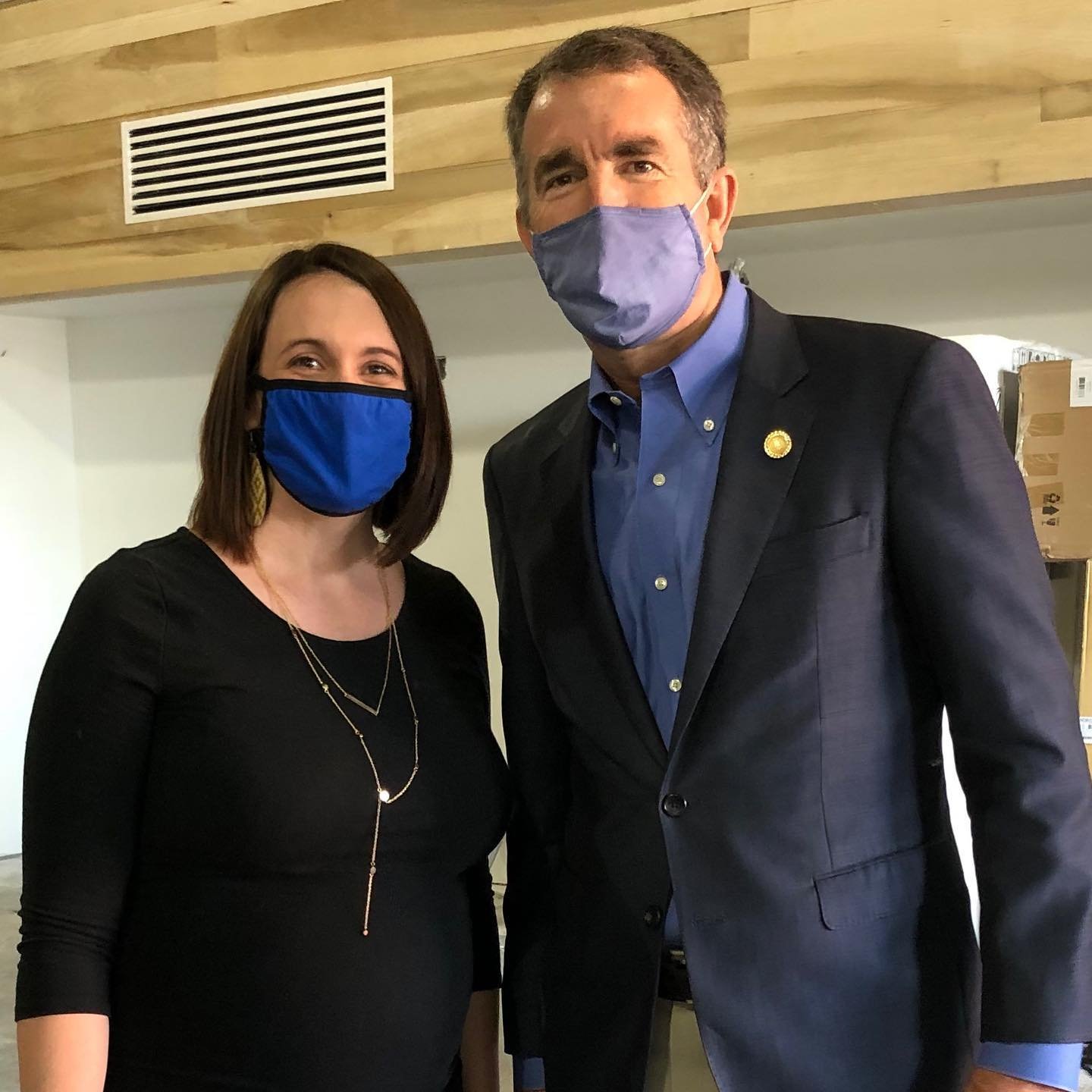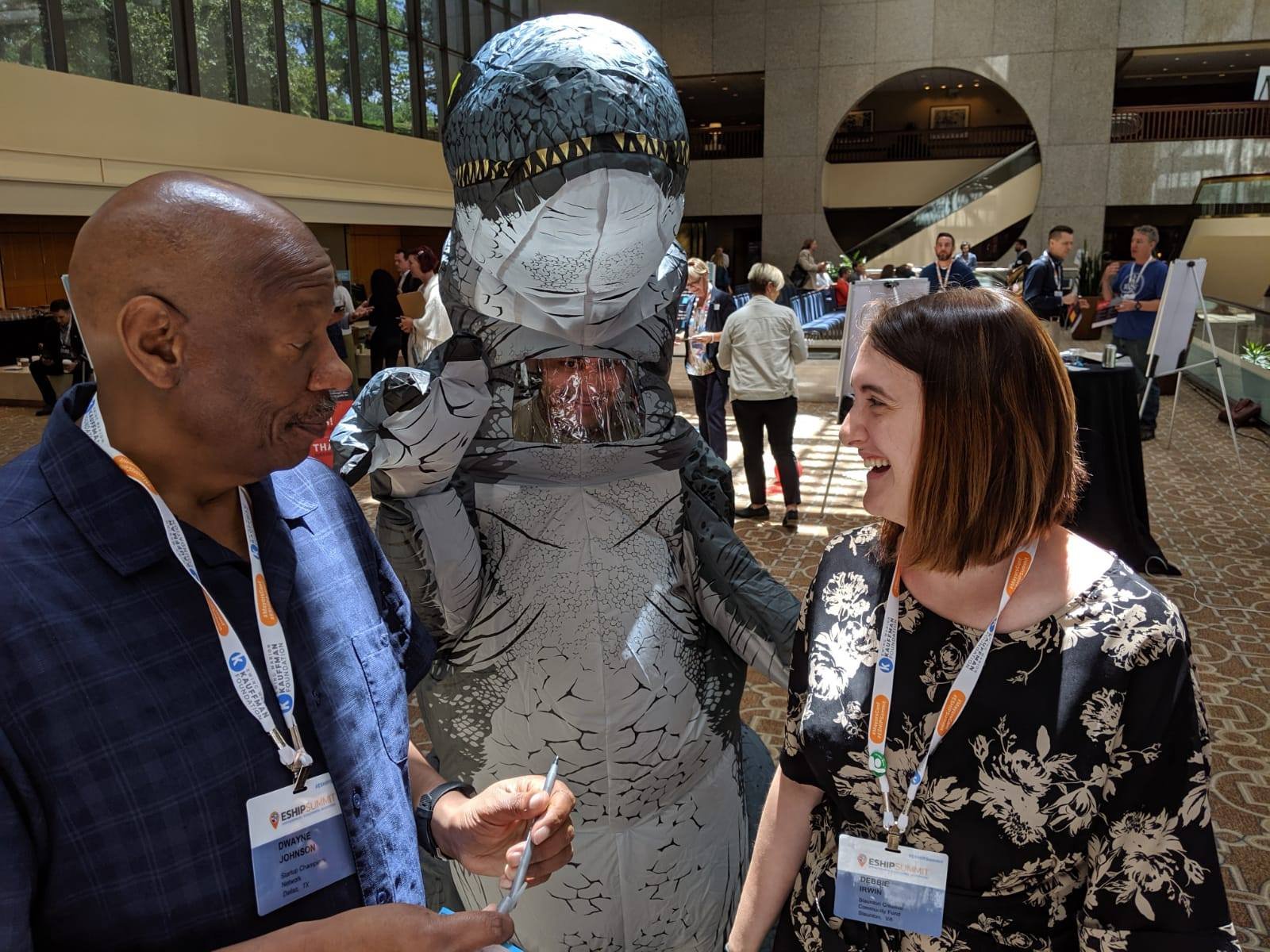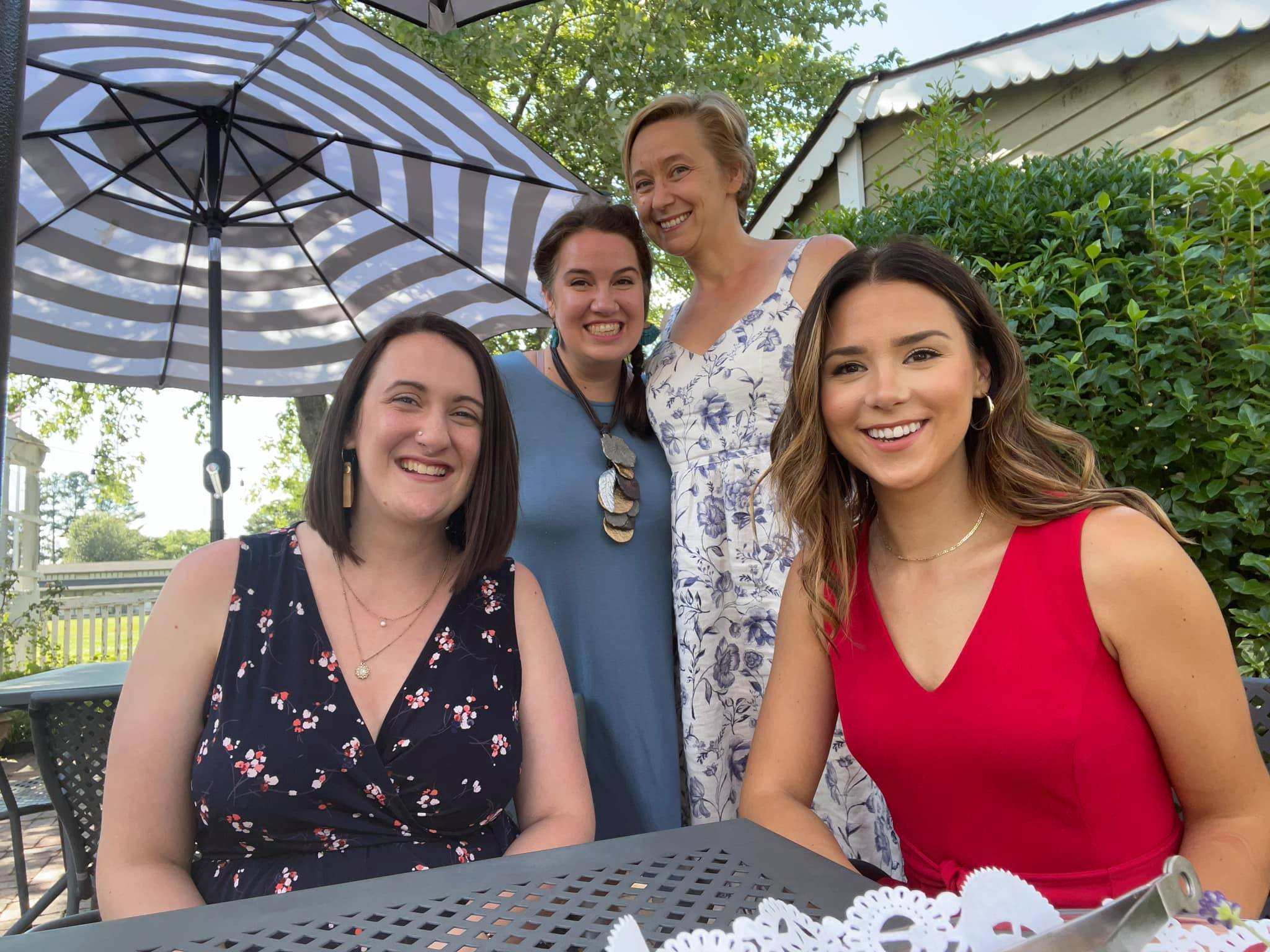Like most ecosystem builders, Debbie Irwin had been doing the work of an ecosystem builder without knowing it. When she took the helm as Executive Director of the [then] Staunton Creative Community Fund, she was, as she describes herself, “a flailing ecosystem builder who didn’t know what ecosystem building was.” A trip to DC for a meetup with Virginia Senators changed all that. Debbie met then SCN Executive Director Larkin Garbee, who got her plugged into Startup Champions Network and on the path to learning what ecosystem building really meant.
Virginia State Senators Mark Warner and Tim Kaine with Debbie Irwin
A lot has happened since. Debbie’s organization now serves the Shenandoah Valley (vs. just Staunton), a staff of 13 (from just her when she became ED in 2019), and $5 Million in grants received over the past year and a half.
How’s that for growth in a rural ecosystem? Incredible is what it is.
Shenandoah Community Capital Fund
Debbie runs what is now the Shenandoah Community Capital Fund (SCCF), which spans the entire Shenandoah Valley region (Winchester, Front Royal, Harrisonburg, Staunton, Waynesboro, Lexington and Buena Vista). In the broadest scope, they are an entrepreneur support organization. They have 3 dedicated entrepreneurial ecosystem builders on staff whose jobs are to actually DO ecosystem building in their communities and a strong support staff to build the organization and help to strengthen the ecosystem. Whether by title or role, they all serve in ecosystem building roles.
Part of the SCCF staff during one of their listening tours
“A big part of my work is partnership development to create better access for entrepreneurs. I work on deepening our relationships with investors, small business development centers, other entrepreneurial support organizations, and local economic development offices. My staff is in charge of the client facing work and I am in charge of building the collaborations needed in order to drive forward the budding and vibrant ecosystem that exists in this rural area,” explains Debbie.
By learning what’s out there for entrepreneurs, she is able to amplify the work of others and build a stronger network in her region.
“It is not our job to own and manage every program, it is our job to create onramps for new programs to exist and then we can amplify them and support other organizations as they do that really in-depth work with those entrepreneurs,” says Debbie.
They do run a few programs, however. Their Business Bootcamp is an 8-week class to help entrepreneurs get their business off the ground; Startup Shenandoah Valley (SV2) is an accelerator they won a $1.2M grant to run; and their Women and Minority-owned Business Support Program sends applicants to Business Bootcamp for free and then offers the opportunity to apply for a $2,000 grant after they’ve been in business for a year.
“So far we’ve expended the funding for that program [Women and Minority-owned Business Support Program] and so we are continually trying to find more dollars to support women entrepreneurs and entrepreneurs of color,” says Debbie.
Since running out of money to run their Women and Minority-owned Business Support Program, they’ve found other ways to dig into supporting historically excluded business owners: through partnerships. They do training on the Walker Program, which supports Black and Brown businesses in Lexington. They’ve partnered with B-Cubed, out of Harrisonburg that does Black and Brown business support, as well as CO.STARTERS, who will be running a program at Shenandoah University’s Institute for Entrepreneurship to help minority entrepreneurs.
“It really launched this focus on women and entrepreneurs of color to the point where we then utilized all those organizations to write a fairly compelling Community Navigator proposal to only focus on women and entrepreneurs of color,” explains Debbie.
They won that grant - a $1M grant from the Small Business Association!
“I think the rising tide lifts all ships saying is used far too often but it’s true. One of the things we have found very effective when talking to our partners is really using that amplification language. We want to amplify the work that you’re doing. How can we help you create the validity that you need to support your community? How can we help you create the structure you need in order to produce real impact rather than just chasing dollars?”
The Challenges of Rural Ecosystem Building
Putting boots on the ground and doing the work to learn more about the barriers all entrepreneurs face in the ecosystem can be a struggle.
“When you have a large, spread out region, it’s hard to find who the other champion ecosystem builders are. It takes a lot of getting out there, asking questions, and taking time to seek out and meet with unexpected populations and groups. I think one of the most fruitful experiences I've had was doing listening tours across our region to meet with entrepreneurs, community citizens, and economic development offices. We did overnights at different parts of our region so we could dig deep and actually put boots on the ground. We had such fruitful, vibrant, and deep conversations with these individuals to really find out why they love where they live and what they struggle with.” says Debbie.
“Another big obstacle is understanding what the heck ecosystem building is. While it’s a concept that has been around for 10-15 years now, that concept still takes time to trickle down in a rural region that’s focused on manufacturing and agriculture. Economic developers tend to think about attraction based economic development not entrepreneur led economic development and so when we come in with these big ideas of how we’re going to support entrepreneurs and create a startup ecosystem, it’s often difficult to get them to understand without first understanding their language.”
Virginia is for Founders
If you’re from Virginia or have visited, you’ve probably heard the phrase “Virginia is for Lovers” ad nauseum. And if you live in Virginia, you know the gazillion different versions of it… Virginia is for BEER lovers, Virginia is for WINE lovers, Virginia is for OUTDOOR lovers… But the stats are in. Virginia really is for founders, because it was recently rated the #1 state for business - AGAIN!
The state of Virginia has placed a focus not just on economic development but on ecosystem building.
“We’ve seen a massive shift in the past 3 years. One with the creation of VIPA (Virginia Innovation Partnership Authority) and then the creation of a subcommittee called entrepreneurial ecosystem for the state through the Virginia Innovation Partnership Corporations, formerly known as the Center for Innovative Technology. Virginia is starting to really focus on entrepreneurship to the point where Virginia Economic Development Partnership (VEDP) is now coming into rural regions and asking what we’re doing on entrepreneurship - whether they’re looking at the Shenandoah Valley, Southwest Virginia, or the Danville region, people are starting to notice the work. You’re also seeing that activity pickup within GO Virginia, one of the leading grantor organizations for the state. They have released three grants directly tied to building a regional ecosystem. Clearly they’re figuring something out. Yes, there’s still a lot of policy and advocacy that can happen here in Virginia but overall, the state is very friendly to entrepreneurs.”
Debbie Irwin and Virginia Governor Ralph Northam
The $5M question: How did you get all those grants?
There are several themes that emerge when you talk to Debbie about her work and the success of SCCF.
Listening: As mentioned earlier, when the organization expanded to cover the region, Debbie and her team put boots on the ground everywhere and listened. Because how can you ever serve someone when you don’t know the challenges they face?
Storytelling: She took those listening sessions and entrepreneurial stories - the good, the bad, and the ugly, and she used that in her grant writing.
“Understanding the need for storytelling has led to a $1.2 Million dollar grant for our region from the state through Go Virginia. That is a collaboration between 17 organizations and took us 18 months to pull together. While storytelling wasn’t always external facing, oftentimes it was to build collaboration,” says Debbie.
After seeing how necessary and effective storytelling was, she even created a Director of Outreach to focus on marketing and communications.
Collaboration: Ecosystem building is a team sport. There should never be one central organization that does it all, you need to asset map and collaborate. Which is exactly what she did.
Meeting people where they are: Physically getting out and about and then understanding the language you need to use to bring people on board.
Virginia was ripe and ready to invest in the work of ecosystem building. Debbie had done the work to listen first and then build from the bottom up specific to her region’s needs. AND she took the Ecosystem Health Challenge.
“When I started the Ecosystem Health Challenge I was about 9 months into my role as the Director. We had just come back from the SCN Summit in Madison and we had started talking about this big grant for our region to figure out how we could better build out the ecosystem based on a report that showed a lot of gaps. When writing the $1.2M grant, we were trying to figure out how the heck to talk about our region, why it was right for investment. Going through the Ecosystem Health Challenge helped me understand how to talk about data, how to frame data, and how to run data. I learned so much and it directly produced all of the data for our grant, which then led to us winning the grant.”
Getting that first $1.2M grant introduced them to the Center on Rural Innovation and the Rural Innovation Network (RIN). They did a year long technical assistance collaboration with RIN and then RIN helped them write a Build to Scale grant from the EDA, where they wove together a story about the good and the bad of their region. That relationship led to a $1.5M grant from the U.S Economic Development Administration.
Why are you a member of SCN?
We ask this in every interview and the answer is generally that they are here for support and the network. But Debbie is like the poster child for SCN because she’s embraced every opportunity we have to offer and it has paid off.
“I started off as this flailing ecosystem builder even though I didn’t know I was one, met Larkin, she immediately plugged me into the Startup Champions Network. I got very actively plugged into what SCN was doing, went to a Summit, then did the Ecosystem Health Challenge. The Ecosystem Health Challenge trained me on better metrics for understanding your ecosystem, why understanding your ecosystem is important, and how to talk about metrics differently. Being able to do that then led to better conversations with all of our community partners, which led to a 17 partner organization collaboration, which turned into a $1.2M grant for our region, which has turned into two additional large grant proposals to the EDA ($1.5M) and to the SBA ($1M). After being awarded all three of those grants, we now have 3 entrepreneurial ecosystem builders in title across the region doing the work that ecosystem building was always meant to do and 13 staff members total, all doing ecosystem building in their own way. It all started because I met SCN and understood what an ecosystem builder was and then took advantage of this health challenge,” says Debbie.
Debbie heads into 2022 with a lot on her plate but so much opportunity! It’s all because she put boots on the ground, listened, partnered, and harnessed the power of data and storytelling.
The story doesn’t end there. There’s a messy middle we didn’t touch on: burnout. Debbie’s advice to ecosystem builders getting started or on the verge of burnout?
“Find friends. If you’re reading this blog, ask any person who is engaged with SCN who they need to know. Without the connections I made over those first two years, I would have quit my job already. There’s been multiple times where I was about to quit because you burn out so quickly as an ecosystem builder. But being connected to SCN members and being able to call them up and say I can’t do this anymore right now… I need to be talked off this ledge. Those relationships kept me going and kept me excited about the work, even though I felt extremely burnt out or extremely overwhelmed. As an ecosystem builder you’re going to get a lot of no’s, you’re going to get a lot of people calling you crazy, you’re going to get a lot of pushback. But if you have those people that you can surround yourself with to continue to push you forward, help you find ways to work around relationships or mentally protect yourself, you’ll be better for it.
Debbie Irwin with SCN members Larkin Garbee and Anika Horn
Also, take Anika Horn’s burnout class! These are things that have kept me sane and kept me excited about my work. That’s the core of ecosystem building: relationships. You not only need them to build great collaboration in your region, you need them to become a better ecosystem builder.”`











